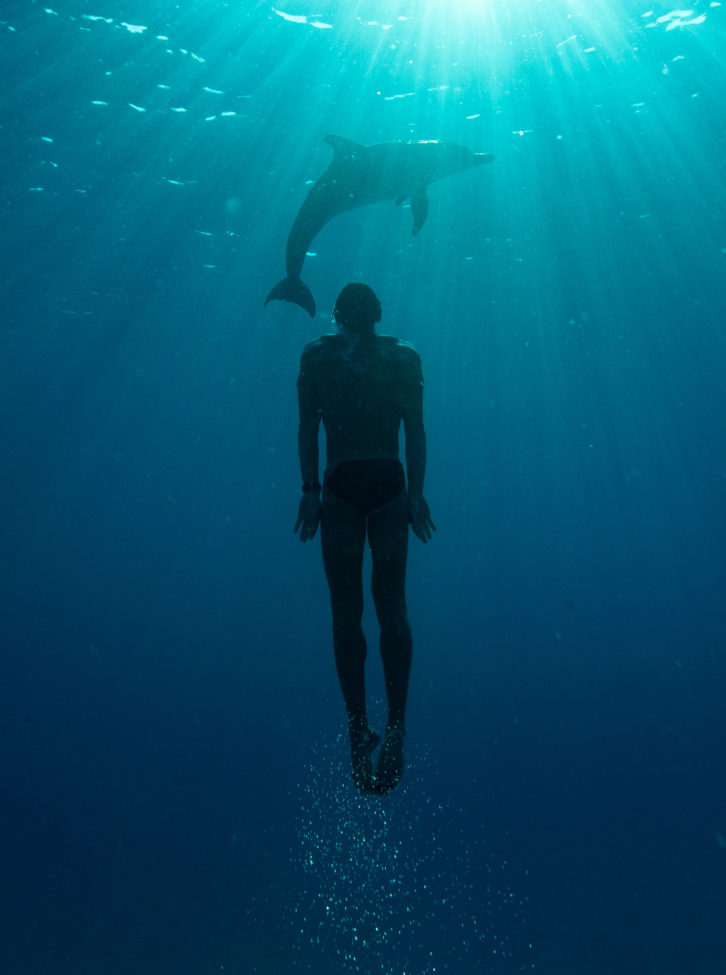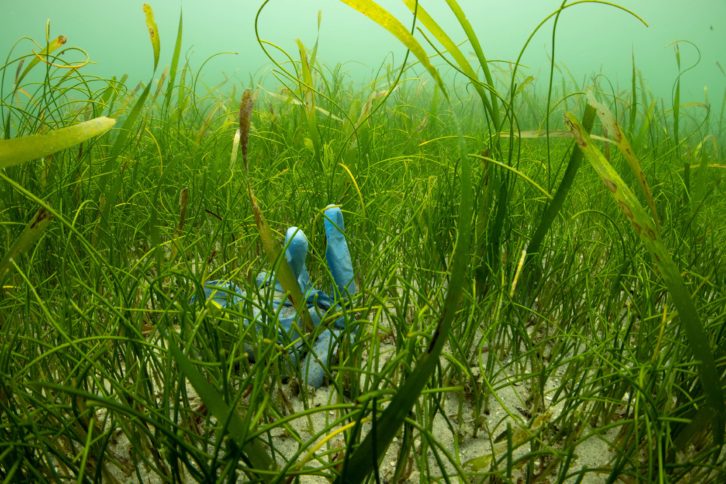During his 40 year career, videographer Peter Zuccarini has worked on a number of blockbuster film, including two Pirates of the Caribbean sequels, Life of Pi and – until the pandemic stopped production – the sequel to Avatar, in which he has spent the past four years as the director of underwater photography for James Cameron.
During the pandemic he has been working with researchers from the University of Miami Rosenstiel School of Marine and Atmospheric Sciences, filming 30 feet below the surface of the ocean. Armed with the Canon ME20F-SH, a multi-purpose camera with a CMOS sensor capable of an extraordinarily low-light ISO setting of 4 million.
How did you get into underwater cinematography?
From a very early age I had exposure to the water and the wildlife. I grew up on Key Biscayne, Florida, which is an island off of Miami. For young children on this island, preschool was mothers and fathers taking their kids to the beach to turn them loose and play in the Turtle Grass and Sargassum Algae.
I learned to free dive for fish and lobster at about 11 or 12 years old but decided I didn’t want to just go and pull things out of the sea anymore so turned to photography. I saved all my money from doing odd jobs to buy an underwater camera and housing and started shooting. Then, in university I started films with aquatic themes.
When I got out of school, I was trying to figure out a way to stay in the water and I started working for a shark research lab as a staff videographer for Dr Sonny Gruber at the University of Miami. Through that, I met a lot of people in the wildlife filmmaking industry, which started a career working on films about sharks.
After a few years, I realised didn’t want to just want to focus on sharks and began exploring the motion picture industry. I became an underwater specialist working across industries until over time the majority of my work was in motion pictures.
Can you tell us about the University of Miami’s Coral Reef Restoration Project?
The University of Miami had been growing corals in the lab for a couple of years and when they reached sexual maturity, they cemented them onto a reef site in the ocean off Miami. Scientists working on the project had determined that this year they would probably spawn in the wild, which they believed would be a successful way to reintroduce these corals back into the sea and encourage further coral growth on the reef sites.
How did you get involved in this project?
Well, initially when Covid hit, a lot of the productions I was involved with paused. Like most people, I went back home with my family while I waited for things to return to “normal”. As I knew a few people from the University of Miami from when I had worked there as a staff videographer, they reached out to me on a whim to see if I was around to help with the shoot.
The team had a very small window to capture the spawning of the coral, which just happened to be a couple of miles straight offshore from the island where I live, so I was able to take my boat out to meet the team.

What kit did you use for this project and why did you select these pieces of kit specifically?
Due to the light sensitivity of the coral, the scientists at the University wanted to work in the dark with no lights, to avoid disturbing the spawning. Canon sent me the Canon ME20F-SH multipurpose camera and an underwater housing in advance, which I put together at home. I had a bit of time to test the kit at home on some iguanas that were in the pool – the island I live on is invaded by green iguanas.
I’d used the camera before but wanted to relearn the different gain. The sensitivity of this camera is so great that I could work with no light, really, just the light in the sky. I was playing with the effect of the super digital grain that I could see in virtually total darkness and testing what happens if I add just one handheld torch light or a proper underwater movie light. I wanted to learn what I could do with the camera in different intensities of light, so I felt ready when I went out to shoot.
What was the most challenging part of this project and were there any features of the kit you used that helped here?
The real challenge was the lighting. The scientists I worked with told me that some light could go on once the coral started spawning, but because the spawning would be staggered throughout the night, they were concerned about having any extra light on site.
Thankfully, the ME20F-SH is well-suited for this. I think we shot at what would be the equivalent of 80,000 ISO, maybe even one stop faster and the footage was fantastic. It was so clean. When most people saw the images, they didn’t think a special camera was used – which is great because you can really see what the scientists were doing.
Often you hear about these cameras that work in the dark and you’re imagining wildlife films where you see lions in total darkness, and it appears like an infrared outline. Well, this is different. It has colour but it’s achieved with such low amounts of light. My understanding is that this camera uses a larger pixel size so that it can pull out the full range of colours even in those low light levels.

How will the footage you captured be used?
The primary use of this footage was to get the community involved with coral restoration, because everybody who lives in a place like South Florida knows how valuable the coral is to the local wildlife and to the environment in general. The University is using this to show what can be done to save the coral and to direct people towards ways they can contribute.
Do you think you will incorporate any of this kit into future projects?
I am really hoping I can get the camera back as I had some ideas involving bioluminescence, starlight and moonlight, where I wanted to really lean on its million ISO equivalent settings, to just break the image back down to its interpretive digital gain. I really want to get back into the water with it and explore what we could do with the maximum settings, which I wasn’t able to do on the coral test because it was a little too risky with the image you get. The image is strange because you can really see what’s happening in actual darkness, but it’s a little more interpretive because of how grainy it gets. That’s something that’s still ahead of me to really explore.






